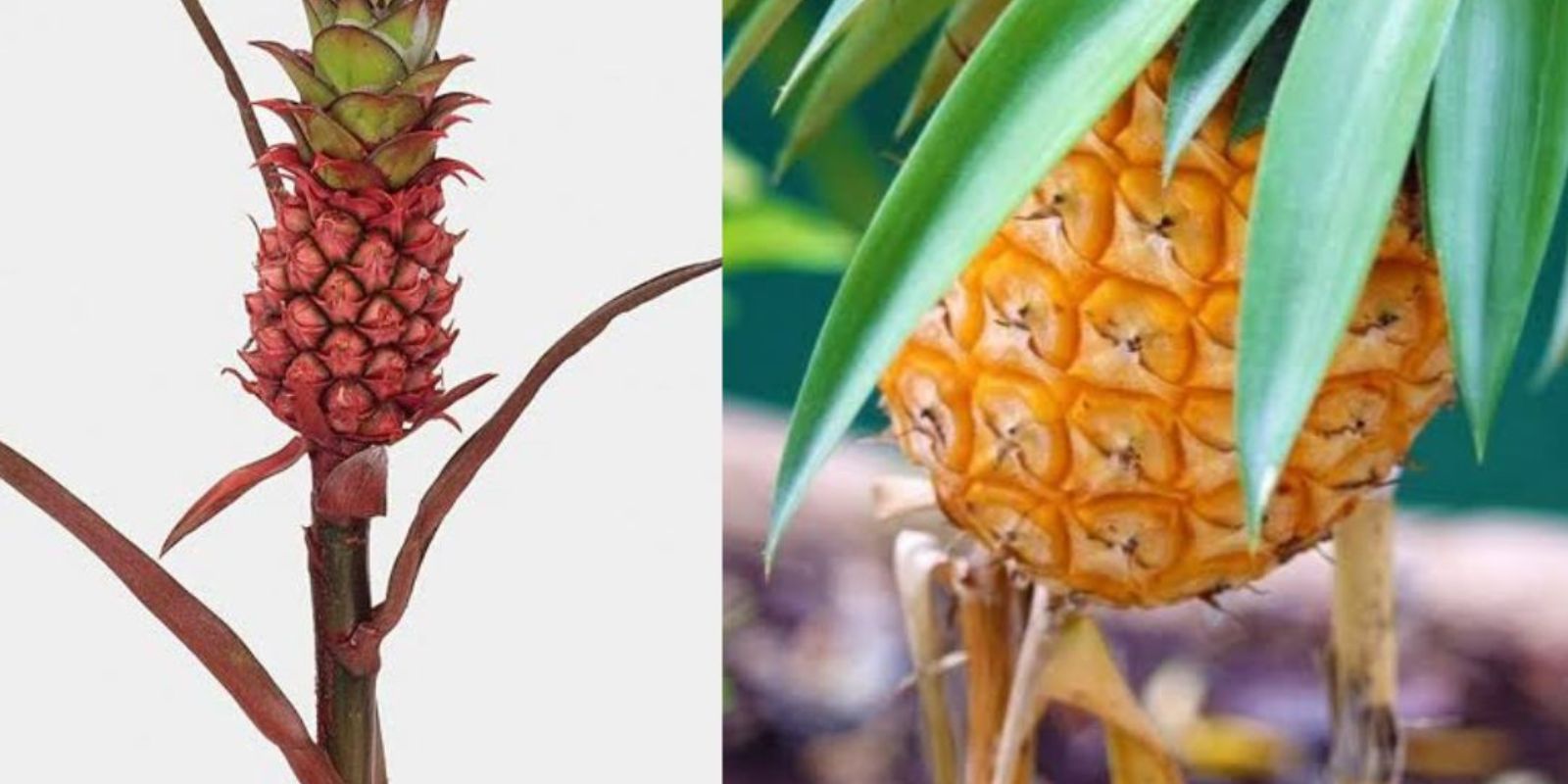Introduction
When we think of pineapples, we often picture the sweet, juicy fruit that brightens up our tables. However, what many people don’t know is that before a pineapple matures into a delicious fruit, it begins as a stunning flower. The pineapple flower is a mesmerizing display of nature’s creativity, showcasing vibrant hues of purple, pink, and red. This unique flowering process not only adds an element of beauty to the plant but also plays a crucial role in the development of the fruit.
In this article, we will explore the fascinating journey of the pineapple flower, from its first bloom to the formation of the fruit. We’ll also discuss how you can grow your own pineapple plant at home, the benefits of pineapples, and some interesting facts about this tropical wonder.
The Life Cycle of a Pineapple Flower
1. The Beginning: A Rosette of Leaves
The pineapple plant (Ananas comosus) belongs to the bromeliad family, a group of tropical plants known for their striking appearance. It starts as a compact rosette of long, spiky leaves that grow outward in a circular pattern. The plant absorbs nutrients and water through its leaves and roots, developing a strong base before it begins flowering.
2. Formation of the Flower Spike
After 12 to 24 months, depending on the climate and growing conditions, the pineapple plant begins to produce a central stem. This is known as the inflorescence—a dense cluster of small flowers that will eventually develop into the fruit.
3. The Pineapple Flower Blooms
The pineapple flower emerges in a spectacular burst of colors. Each plant produces one flower spike, which contains up to 200 individual flowers. These flowers bloom in succession, starting from the bottom and working their way up.
Each tiny flower is tubular and showcases bright shades of purple, pink, and red. The color intensity may vary depending on the variety of pineapple. As the flowers mature, they start to merge together to form what we recognize as the pineapple fruit.
4. Pollination and Fruit Development
Pineapples can self-pollinate, but in the wild, pollination is often done by hummingbirds or certain types of insects. However, commercial pineapple growers prevent pollination because pollinated pineapples develop seeds, which affect the texture and taste of the fruit.
As the individual flowers fuse, they create the fleshy, golden-yellow fruit we know and love. This process takes several months, and during this time, the plant requires consistent warmth, sunlight, and water to ensure a healthy fruit.
Growing Your Own Pineapple at Home
You don’t need to live in the tropics to grow a pineapple plant! With the right care, you can cultivate a pineapple indoors or in your garden. Here’s how:
1. Choosing a Pineapple Top for Planting
The easiest way to grow a pineapple is by using the top (crown) of a store-bought pineapple. Follow these steps:
- Select a fresh, healthy pineapple with green leaves.
- Cut off the top about half an inch below the leaves.
- Remove a few lower leaves to expose the base.
- Let the crown dry for 1-2 days to prevent rotting.
2. Rooting the Pineapple Crown
- Fill a glass with water and place the pineapple crown in it (only the base should be submerged).
- Set it in a warm, sunny location and change the water every few days.
- In about 2-3 weeks, roots will start to develop.
3. Transplanting into Soil
- Once the roots are 2-3 inches long, plant the crown in a pot with well-draining soil.
- Choose a large pot (at least 10-12 inches deep) to accommodate growth.
- Keep the plant in a warm, sunny spot with indirect light.
4. Watering and Maintenance
- Pineapple plants do not need much water—water them sparingly.
- Feed with a balanced fertilizer every 6 weeks.
- If growing outdoors, protect them from frost or extreme cold.
5. Flowering and Fruit Production
After about 1.5 to 2 years, your pineapple plant may begin to flower! The vibrant pineapple flower will appear first, and after a few months, the fruit will develop.
Fun Facts About Pineapple Flowers
- A Pineapple Is Made of Multiple Flowers – Each pineapple fruit is actually made up of hundreds of small flowers fused together!
- Pollination Affects Pineapple Quality – Pollinated pineapples develop seeds, making them less desirable for eating.
- Only One Fruit Per Plant – Unlike many fruit trees, each pineapple plant produces just one fruit in its lifetime.
- Pineapple Plants Can Live for Years – After harvesting, the plant can produce “pups” (baby plants), which can be replanted for new growth.
Why You Should Grow Pineapples
Growing your own pineapple plant is fun, rewarding, and sustainable. Not only do you get to witness the stunning pineapple flower in full bloom, but you also enjoy the satisfaction of harvesting your very own organic, homegrown fruit!
Have you ever seen a pineapple flower before? Share your thoughts in the comments! 🌱👇

